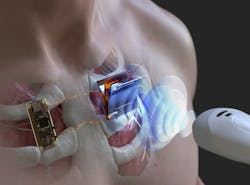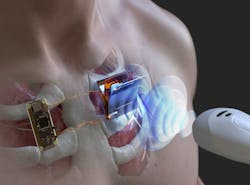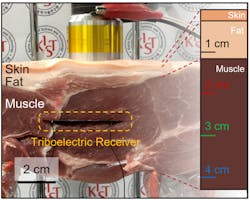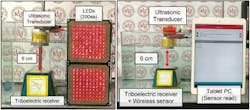Battery Option: Applying Ultrasonic Waves for Wireless Charging
Implantable medical devices such as pacemakers and defibrillators use electrical pulses to regulate the heart. Despite technological advances in leads or electrodes, these devices still use batteries, which present unique safety and reliability challenges to their developers and manufacturers.
For one, the batteries in implanted devices run out over time. These batteries are currently replaced by an incision surgery, which may lead to health complications.
Researchers from the Korea Institute of Science and Technology (KIST) have come up with an alternative solution to the cumbersome method of replacing batteries of implanted devices. The research team led by Dr. Hyun-Cheol Song at the Electronic Materials Research Center has developed an ultrasonic wireless power transmission technology.
Their new charging technique by wireless energy transfer could be an effective alternative. In addition, the technique could be used to charge the batteries of underwater devices, such as sensors, that are used for monitoring the conditions of submarine cables.
Limits of Electromagnetic Induction
Electromagnetic (EM) induction and magnetic resonance is presently used in wireless energy transfer in smartphones and wireless earphones. But EM does not pass through water or metal, which means that charging is limited to short distances.
The problem with using EM to recharge implanted medical devices is that it generates heat, noted the KIST researchers. They explained that the magnetic resonance method requires that the resonant frequencies of the magnetic field generator and transmitting device are exactly the same. There is also a risk of interference with other wireless communication frequencies, such as Wi-Fi and Bluetooth, they said.
An Alternative to EM Waves or Magnetic Fields
The research team suggested using ultrasonic waves as an energy transmission medium to replace EM waves or magnetic fields. Sonar, which uses ultrasound waves, is commonly used in underwater environments to detect objects or measure depth. Ultrasonic waves can penetrate water to long distances. It is also a safe method used in various applications, such as organ or fetal condition diagnosis.
Unfortunately, existing acoustic energy transfer methods are not commercialized easily due to the low transmission efficiency of acoustic energy, noted the researchers. To overcome this shortcoming, they developed a model that receives and converts ultrasonic waves into electrical energy using the triboelectric principle, which allows for the conversion of small mechanical vibrations into electrical energy effectively.
By adding a ferroelectric material to the triboelectric generator, the researchers explained, the ultrasonic energy transfer efficiency was significantly improved from less than 1% to more than 4%. They were able to generate more than 8 mW power at a distance of 6 cm was possible. This was sufficient to simultaneously operate 200 LEDs or to communicate Bluetooth sensor data underwater, they said.
The researchers added that their device had high energy conversion efficiency and generated marginal amounts of heat.
According to Song, this study demonstrated that electronic devices can be driven by wireless power charging via ultrasonic waves. “If the stability and efficiency of the device are further improved in the future, this technology can be applied to supply power wirelessly to implantable sensors or deep-sea sensors, in which replacing batteries is cumbersome,” he said.
Results of the study are published in Energy & Environmental Science.
About the Author

Rehana Begg
Editor-in-Chief, Machine Design
As Machine Design’s content lead, Rehana Begg is tasked with elevating the voice of the design and multi-disciplinary engineer in the face of digital transformation and engineering innovation. Begg has more than 24 years of editorial experience and has spent the past decade in the trenches of industrial manufacturing, focusing on new technologies, manufacturing innovation and business. Her B2B career has taken her from corporate boardrooms to plant floors and underground mining stopes, covering everything from automation & IIoT, robotics, mechanical design and additive manufacturing to plant operations, maintenance, reliability and continuous improvement. Begg holds an MBA, a Master of Journalism degree, and a BA (Hons.) in Political Science. She is committed to lifelong learning and feeds her passion for innovation in publishing, transparent science and clear communication by attending relevant conferences and seminars/workshops.
Follow Rehana Begg via the following social media handles:
X: @rehanabegg
LinkedIn: @rehanabegg and @MachineDesign



